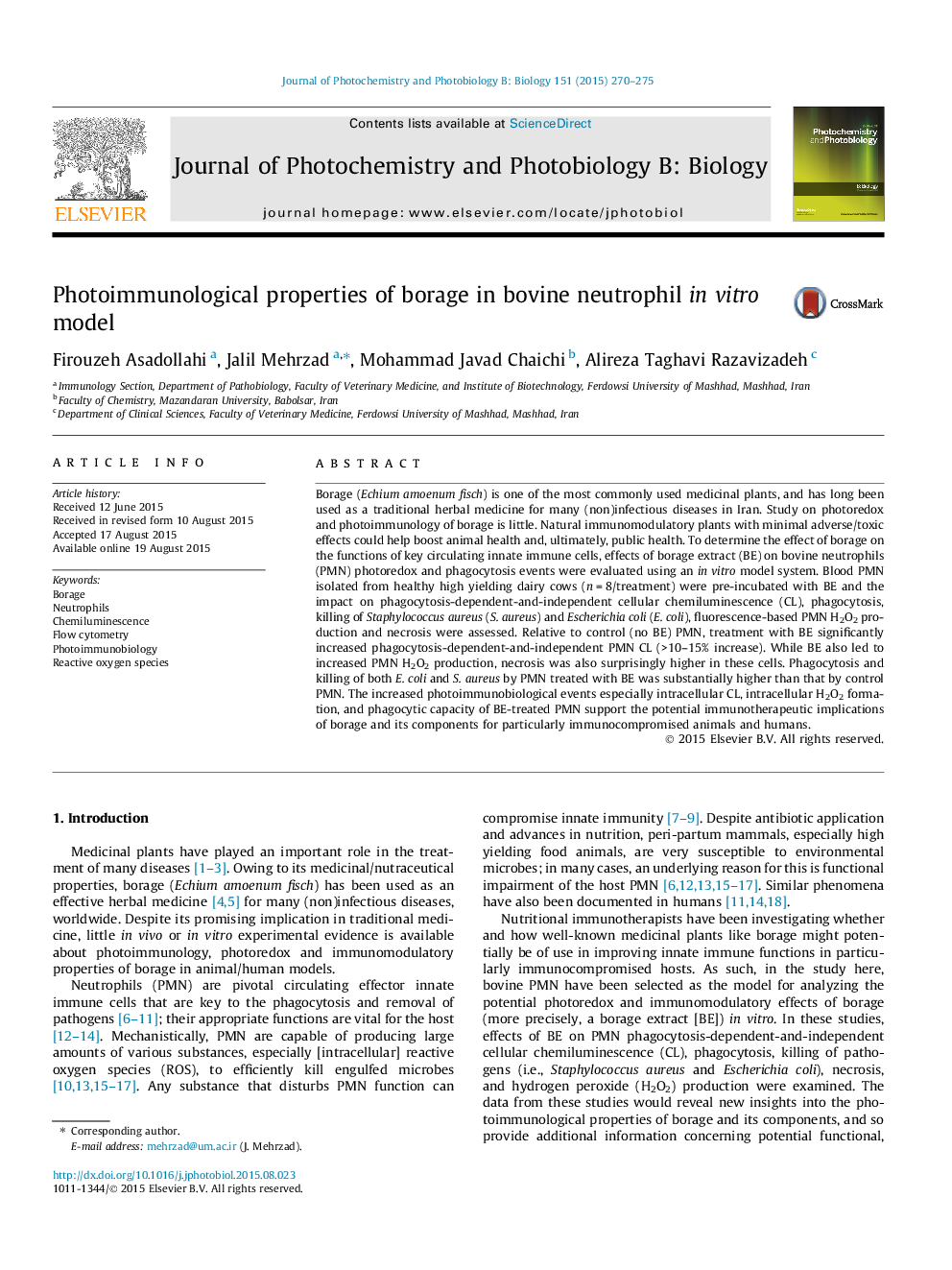| Article ID | Journal | Published Year | Pages | File Type |
|---|---|---|---|---|
| 30243 | Journal of Photochemistry and Photobiology B: Biology | 2015 | 6 Pages |
•The effect of borage extract (BE) on bovine neutrophils functions was assessed.•BE boosts the phagocytic capacity of neutrophils.•BE modulates neutrophils photoredox activity and intracellular photon production.•BE-exposed neutrophils exhibits enhanced killing of E. coli and S. aureus.•Our novel finding highlights nutraceutical, photoimmunological and immune-modulatory implications of borage.
Borage (Echium amoenum fisch) is one of the most commonly used medicinal plants, and has long been used as a traditional herbal medicine for many (non)infectious diseases in Iran. Study on photoredox and photoimmunology of borage is little. Natural immunomodulatory plants with minimal adverse/toxic effects could help boost animal health and, ultimately, public health. To determine the effect of borage on the functions of key circulating innate immune cells, effects of borage extract (BE) on bovine neutrophils (PMN) photoredox and phagocytosis events were evaluated using an in vitro model system. Blood PMN isolated from healthy high yielding dairy cows (n = 8/treatment) were pre-incubated with BE and the impact on phagocytosis-dependent-and-independent cellular chemiluminescence (CL), phagocytosis, killing of Staphylococcus aureus (S. aureus) and Escherichia coli (E. coli), fluorescence-based PMN H2O2 production and necrosis were assessed. Relative to control (no BE) PMN, treatment with BE significantly increased phagocytosis-dependent-and-independent PMN CL (>10–15% increase). While BE also led to increased PMN H2O2 production, necrosis was also surprisingly higher in these cells. Phagocytosis and killing of both E. coli and S. aureus by PMN treated with BE was substantially higher than that by control PMN. The increased photoimmunobiological events especially intracellular CL, intracellular H2O2 formation, and phagocytic capacity of BE-treated PMN support the potential immunotherapeutic implications of borage and its components for particularly immunocompromised animals and humans.
Graphical abstractGraph illustrates that during redox imbalance extraphagosomal production of photons by neutrophils contributes to many pathological consequences. Immunobiologically, photons for bactericidal activity is produced intraphagosomally for effective destruction of pathogens with minimal tissue damage; borage would mimic so. Here with analytically relevant photoredox assays we evaluated photoimmunological properties of the medicinally promising herb, borage. The findings surely encourage R&D to apply borage and its components in pharmaceutical implications to reverse systemic photoredox imbalance and thus boost immunity, in vivo. This scheme is based on our previous, current and future studies in the area of free radicals biology and medicine.Figure optionsDownload full-size imageDownload as PowerPoint slide
